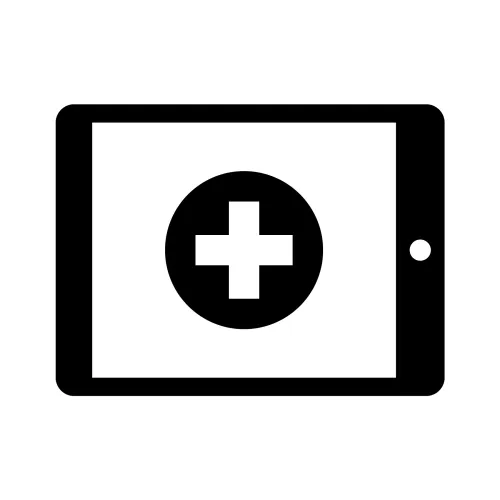Pain Management Coding Alert
Get Rules Straight for Providers Using 99211

You can report this E/M without a physician present … sometimes.
The established patient office evaluation and management (E/M) code 99211 (Office or other outpatient visit for the evaluation and management of an established patient, that may not require the presence of a physician or other qualified health care professional. Usually, the presenting problem(s) are minimal. Typically, 5 minutes are spent performing or supervising these services ...) can be a big benefit for your practice — if you know how to apply it.
Explanation: Used correctly, 99211 can allow nurses or other qualified professional staff focus on low-level E/Ms, freeing up physicians to take on higher-complexity patients.
There are rules to reporting 99211, however, and you’ll need to know them to keep your coding spot-on. Check out this list of tips designed to make your 99211 reporting more accurate and easier.
Find E/M Visit Proof
To report 99211, a practitioner must perform an E/M service. In other words, it isn’t a catch-all code that you can report every time a patient passes through your practice.
Example: A nurse speaks to a patient on the phone and agrees to obtain a prescription refill for her. The patient comes to the practice an hour later, and the nurse hands her the prescription through the reception window.
Solution: Because the nurse did not evaluate the patient, and no medical necessity required that she meet with her, you should not report an office visit. If the nurse couldn’t renew the patient’s prescription without evaluating her, however, she should have documented the medical necessity to support billing 99211.
Whenever you report 99211, the provider should document the reason for the visit, a brief (interim) history of the patient’s illness, and any pertinent physical exam (vital signs are commonly expected by contractors in note audits of 99211). A brief evaluative statement (e.g. “No complications, PPI being used properly, refill provided”) is good practice.
Also, make sure you have the date of service, the reason for the visit, proof that the nurse performed the service per the physician’s order, and the nurse’s legible signature.
Check Code Descriptor
The description for 99211 states, “for the evaluation and management of an established patient.” When patients come in and weigh themselves, or simply hand you a form for the doctor to complete and don’t require any face-to-face time with a physician or nurse, that doesn’t meet the code’s requirements.
In some cases, a prescription pickup or form completion could require an E/M visit to take place, and in those cases, 99211 is appropriate if the documentation supports it.
For instance, if a patient presents to pick up a prescription and the nurse meets with the patient to review the prescription to make sure the patient is properly educated on how to take the medication, review side effects, etc., then it could qualify. The code states, “typically, five minutes are spent performing or supervising these services,” so it’s OK if the visit or face-to-face time isn’t long. But enough has to happen that the nurse can write a progress note, and that some brief physician’s time to supervise the service is warranted.
Use ‘Established Patient Rule’
You shouldn’t forget the fact that 99211 only applies to established patients, not new ones. If a nurse saw a new patient for a level-one visit, you’d instead report 99201 (Office or other outpatient visit for the evaluation and management of a new patient, which requires these 3 components ...) — but nurses cannot use that code.
Code 99211 is only for established patients because it is technically performed incident-to, meaning the ancillary staff nurse will be using the supervising provider’s billing information to get the practice paid for the work. To meet the guidelines associated with incident-to, the patient must have a plan of care that has already been created by a supervising provider. The nurse would be providing services directly indicated and/or appropriate to the plan of care.
Report 99211 for Physicians
When necessary, a physician or other qualified nonphysician practitioner (NPP) can use 99211, despite the fact that many practices refer to it as a “nurse’s code.” Any qualified personnel can report 99211, including physicians, medical assistants, licensed practical nurses, technicians, and other aides working under the physician’s direct supervision, depending on state law. Most typically, a physician providing a brief service would utilize 99212 (… A problem focused history; A problem focused examination; Straightforward medical decision making …) to reflect very limited history and/or physical exam and straightforward medical decision making, such as renewing a low-risk medication.
Beware 99211 Bundles
Although 99211 is often the best choice when a clinician performs a quick, medically necessary visit, payers won’t always reimburse it. The Correct Coding Initiative (CCI) bundles 99211 into several other codes, and some payers maintain their own edits for it.
For instance, CGS Medicare says on its website, “Code 99211 is always bundled with injection administration procedures. CMS guidelines specify that the administration of injections is only paid separately when there is no other physician fee schedule service paid on that date of service for that provider.”
Related Articles
Pain Management Coding Alert
- News You Can Use:
Here's the Good — and the Bad — of the 2019 MPFS Proposal
Conversion, flat E/M coding rates highlight CMS suggestions. CMS recently released its annual proposal for [...] - Injections:
Keep an Eye on Notes for Sure-Shot Epidural Injection Coding
Reminder: Cervical/thoracic, lumbar/sacral shots have separate codes. PM coders that file claims for patients who [...] - E/M Coding:
Get Rules Straight for Providers Using 99211
You can report this E/M without a physician present … sometimes. The established patient office [...] - You Be the Coder:
Arthrocentesis Coding With Depo-Medrol
Question: A patient with a diagnosis of post-traumatic right knee osteoarthritis reports to the PM [...] - Reader Question:
Look for Liquid Buildup on Effusion Patients
Question: Our PM specialist performed a level-three evaluation and management (E/M) service for an established [...] - Reader Question:
Check Sequence When Coding for CT With Contrast
Question: Notes indicate that the PM specialist performed a computed tomography (CT) scan on a [...] - Reader Question:
Keep Your Finger on Digital Neuroplasty Code
Question: I’m new to PM coding and I’ve been trying to get up to speed [...]



